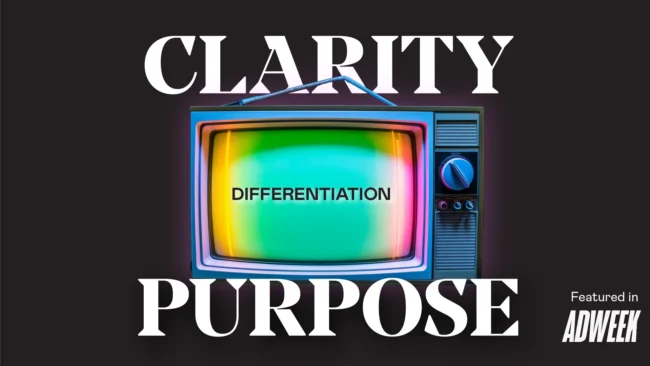
In a world changed by the Covid-19 pandemic, our mailboxes have become the new retail experience. And that provides numerous opportunities for brands to broaden their appeal.
A glance at a doorstep can offer that moment of delight and excitement, triggered by a new purchase. Online shopping and home delivery have been a significant part of most people’s purchasing repertoire for some time, but in lockdown – in the context of restricted lifestyles and limited entertainment – that first physical interaction is more anticipated and coveted than ever before.
Across all sectors, brands are finding themselves shipping far greater quantities than they have in the past. With shoppers housebound, the already growing interest in home delivery has surged. In Mintel’s COVID-19 Consumer Tracker, 36% of respondents said they had done more online shopping since the start of the outbreak (as of 23rd April 2020). Brands like Nike and Lululemon have seen significant increases in online sales, 40-70% YoY increase, according to Earnest Research.
Inevitably, the delivery sector is expected to record annual growth also – 17.5% in 2020 compared with a rise of 10.5% forecast prior to the crisis. Between 2019 and 2024, market value is expected to grow by 92%, according to Mintel.
In order to tap into this new opportunity here are five top tips for brands:
- Use the art of the reveal to build a doorstep brand experience. From the outer package to the final product, each layer of the unwrapping can be part of the brand story through color, messaging, material and design.
- Raise your unboxing game – social sharing has made this a talked about, filmed and commented on experience that can reach audiences not yet using your products.
- Strip out all superfluous packaging. People are angry about excess waste now – especially as they see their recycling and waste bins overflowing – so brands that over-package risk losing customers on one purchase.
- Redesign packing so it can be reused rather than just recycled. Make it useful and worthy of being kept. This builds longevity as it’ll mean the brand remains in the home and being used beyond just the use of the product.
- If the product is sold through a subscription think about building in returns of packaging for reuse or recycling into the process. This is more sustainable and takes the waste burden away from the customer.
Implications for structure and products
Some brands have been ahead of the COVID curve, already adopting mailbox-sized wines sold in flat bottles; Whisky me, a subscription whisky club, posting whisky in pouches; the monthly wine subscription service Vinebox, delivers three 10 cl vials of wine, along with tasting notes, reviews and pairing suggestions; and cocktails-in-a-box company, NIO cocktails selling ready mixed cocktails made from quality ingredients, packaged in individual boxes.
COVID-19 will likely have consequences for the actual products brands sell – the rise of people buying large quantities of products has caused storage problems for many, especially those living in cities. Brands may have to rethink product formulations, which can allow for more mailbox friendly solutions. Companies such as Blueland have done just this with its cleaning products, selling glass bottles for permanent use and tablets that are mixed with water to create the detergents. Humankind sells mouthwash tablets in a similar way.
Balancing packaging with sustainability
The increase in items being delivered to the door, and the associated requirement of disposing of the unwanted or unnecessary packaging, has put the spotlight on excess and unrecyclable packaging for all brands, whether sustainability is part of their business strategy or not.
COVID-19 means people are seeing this issue through a new lens. The sheer number of boxes, packages and products arriving on people’s doorsteps has been overwhelming for many. Every text or email received from a retailer with shipping updates is a reminder of more packaging on its way. I experienced this personally when ordering food for my toddler from a large, US big box retailer. Each item comes in a vacuum seal pouch, but the retailer had then packed each individual pouch in a separate plastic bag – this meant more than 30 unnecessary plastic bags for single serve food items.
More than one way to crack an egg
Reducing packaging and taking a sustainable approach can involve changing the materials used. German product designer Jonna Breitenhuber created packaging concepts from hollowed-out soap bars while skincare brand Haeckels makes its own packaging from agar extracted from the cell walls of seaweed. Packaging is also being incorporated as part of the product. Toy company Educational Insights sells a toy rocket where the cardboard box packaging, with its colored graphics, is part of the play experience.
Sustainable sneaker brand Allbirds, a favorite among influencers and gaining considerable attention across social media, has ensured its packaging not only gives a suitably impressive reveal, but also meets its environmentally-focused positioning. It has created a recyclable multi-use box. The shipping/shoe box has two holes on the top so in store a handle can be attached, and no bag is needed.
While recycling was once the sole focus of companies looking to ensure their packaging was more environmentally friendly, it has now shifted so that reusability is higher up the pecking order of good practice. Some brands are making it easier for customers to avoid single-use plastics. For example, natural skin and haircare brand Beauty Kitchen has an initiative called Return, Refill, Repeat across its range. When packagingis empty, customers can return it to the brand, with free postage, where it is then cleaned and reused. These companies all demonstrate how brands can deliver an experience without falling into the trap of overpackaging.
The rise of unboxing
With an increased focus on packaging, more brands will need to embrace a key part of today’s purchasing experience – unboxing. This has developed into a form of entertainment in its own right, with over 20 million search results on YouTube for unboxing and one in five consumers having watched an unboxing video, according to Google. The first unboxing video surfaced in 2006, for a Nokia mobile phone and while the earliest videos were mostly of gadgets and fashion items, today unboxing is being embraced and desired across categories. The rise in popularity can be attributed to the way the unboxing experience, and even watching the experience makes people feel. Even second hand, viewing an unboxing video gives consumers the feeling of receiving a gift. The increase in popularity is also connected to another definition of the word feeling, around the sense of touch. Watching unboxing videos elicits a tactile experience, which is extremely powerful in this increasingly digital world and considering the rise in engaging multiple senses in marketing.
With the current and likely future decreases in footfall traffic for retailers across categories due to COVID-19, the unboxing experience will be a much more critical marketing tool for brands moving forward. Unboxing allows a brand to communicate its strategy through experience. When properly considered, each stage of unwrapping can reveal a little more about both the product and the brand through tone of voice and messaging, design, materials and content.
A memorable experience is what will keep customers coming back. Customers who stick with a brand over time will spend 67% more than new customers. By creating moments of surprise and delight for consumers, unboxing can play an important role in building loyalty with shoppers, as well as fueling recommendations through social sharing of the experiences a brand delivers.
Doing unboxing well
Direct to consumer (DTC) brands are having their moment and the ones most embracing this rise in unboxing. Just under half of US consumers now purchase from DTC brands. The so-called ‘disrupter consumers’ now comprise 48% of all US consumers ages 13+. They tend to be younger, have higher household incomes and are choosing brands that help them self-express. One in every three disrupter consumers has been identified by the Interactive Advertising Bureau as a ‘super influencer’ – someone who deliberately takes the time to repost brand focused content and/or promotes their chosen brands with user generated content to boost their influencer status.
US beauty brand, Glossier, has used its distinctive unboxing and packaging to help make it famous, and elevated reusable packaging in the process. Its products are delivered in a reusable bubble pouch that has customers sharing across social media how they repurpose the pouches. Its on-brand unboxing includes messaging, social calls to action, samples, gifts/stickers, multiple substrates, printing techniques, including UV gloss, and said pouches.
Reusable packaging helps embed a brand into customers’ lives. We’ve seen the rise of this in reusable cloth bags being given out by brands but Glossier has delivered a gift that fits perfectly in women’s lives, understanding that most women use pouches for their cosmetics when traveling.
Madison Reed, the home hair coloring brand is one that is likely to prosper in these times. Salon visits are currently curtailed and even in the future, are women going to feel comfortable spending up to three hours in close proximity to their colorist? Madison Reed is disrupting the traditional hair color salon business by offering professional direction and products shipped to the door. Its unboxing delivers a service experience through its packaging and messaging, all designed to take the fear out of home coloring.
CPG companies and other product brands that have traditionally relied on wholesale sales channels have taken notice of these DTC brands. Even before COVID-19, between 2015-2019 $3.3B has been invested in CPG brands incorporating DTC in their strategy, according to digital shelf institute. We’ve seen brands like PepsiCo start going DTC with its Pantryshop.com and snacks.com offer, and Heinz and Nestlé have been new DTC offers.
With sales significantly down due to the drop-in retail in-store shopping, more CPG brands will surely be exploring ways to connect and sell to consumers in the coming days.
Capitalizing on a new moment of truth
The rise of home delivery in the COVID-19 crisis has become a tipping point for brands – to not rethink the role of packaging, leverage the power of unboxing and even revisit sales models is a missed opportunity.
Even as lockdown eases, home delivery is entrenched across most sectors. The theater of receiving and opening a package at home is a key brand opportunity. Brand loyalty is no longer simply about whether a product or service is ‘good’ – many brands are equally ‘good’. What brings customers back is that extra wow factor as this sets a brand apart from its competitors. And the moment where the ‘wow’ can be best achieved, is at the mailbox.

